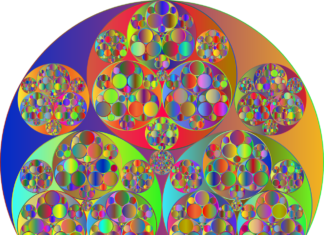Coinflip is a simple and popular game of chance that has been enjoyed by people for centuries. It is a classic way to make a decision or settle a bet, and its appeal lies in its simplicity and the element of unpredictability it offers. The game involves flipping a coin and predicting which side will land facing up – heads or tails. Coinflip has been played in various forms throughout history, and its cultural significance and symbolism have made it an enduring part of our social fabric.
The origins of coin flipping can be traced back to ancient times, with records of similar games found in different civilizations. The concept of flipping a coin as a means of decision-making can be seen in ancient Roman rituals, where it was believed that the outcome of a coin toss was influenced by the gods. Coinflip was often used to settle disputes or determine the outcome of important matters. The practice continued through the Middle Ages and into modern times, with coin flipping evolving into a more standardized game.
In its simplest form, Coinflip involves the use of a regular, circular coin with distinct sides. Traditionally, one side of the coin is marked with the image of a head, while the other side features the image of a tail. The coin is held at the edge and flipped into the air, allowing it to rotate and eventually land on one side. The outcome of the game is determined by which side of the coin is facing up when it comes to rest on a flat surface.
The game of Coinflip is often associated with fairness and impartiality, as the outcome is based solely on chance. The probability of either heads or tails appearing is theoretically equal, assuming a perfectly balanced coin and an unbiased flip. This equality makes it a popular choice for settling disputes or making decisions when fairness is of utmost importance. The simplicity and transparency of the game make it accessible to people of all ages and backgrounds, contributing to its enduring popularity.
In addition to its practical applications, Coinflip has also acquired symbolic and metaphorical meanings in various cultures. The game represents the duality of life, the concept of fate, and the notion of taking risks. The act of flipping a coin and accepting the outcome is seen as a way to surrender control and let chance dictate the course of events. Coinflip has been depicted in literature, movies, and art, often serving as a narrative device to explore themes of chance, luck, and destiny.
With the advent of digital technology, Coinflip has found its way into the virtual realm. Online platforms and mobile applications now offer virtual coin flipping as a convenient alternative to the traditional physical coin. These digital versions often feature realistic animations and sound effects, aiming to recreate the experience of flipping a coin in person. This evolution has made Coinflip even more accessible, allowing people to play the game anytime, anywhere, without the need for a physical coin.
In recent years, Coinflip has also gained popularity within the realm of cryptocurrency. Cryptocurrency coin flipping involves the use of digital currencies, such as Bitcoin or Ethereum, as the basis for the game. Instead of a physical coin, a random number generator or algorithm is used to determine the outcome. Cryptocurrency enthusiasts and traders have embraced this form of Coinflip as a fun and engaging way to interact with digital assets, adding an extra layer of excitement to their trading activities.
Coinflip is a timeless game that has captivated people for generations. Its simplicity, fairness, and element of chance make it a versatile tool for decision-making, settling disputes, and exploring the concepts of luck and fate. Whether played with a physical coin or in the virtual realm, Coinflip continues to be an enjoyable pastime that transcends cultural boundaries and brings people together in the spirit of chance and uncertainty.
The beauty of Coinflip lies in its universal appeal. Regardless of age, background, or cultural differences, the game transcends barriers and brings people together in a shared experience of anticipation and excitement. It is a game that can be played in a casual setting among friends, as well as in more formal contexts. In sports, for example, Coinflip is often used at the beginning of a match to determine which team gets to choose their side or who kicks off. It adds an element of suspense and fairness to the proceedings, ensuring that chance plays a role in the outcome.
Furthermore, Coinflip has found its way into popular culture, with references and representations appearing in various forms of media. From movies and television shows to literature and music, the game is often used as a metaphor for decision-making, fate, and the unpredictable nature of life. Its symbolism extends beyond the physical act of flipping a coin, becoming a reflection of the choices we make and the consequences that follow. Coinflip has become a cultural touchstone, recognized and understood by people around the world.
In the realm of gambling, Coinflip has also made its mark. It is a staple in many casinos and betting establishments, where it is offered as a simple and fast-paced game with instant results. Players can wager on the outcome, placing their bets on either heads or tails. The odds are typically set to ensure a fair payout, with a slight advantage given to the house. The game’s simplicity and the potential for quick wins make it an appealing choice for those seeking a thrill without complicated rules or strategies.
Coinflip has even found its way into the world of esports and online gaming. In certain video games, particularly those with virtual economies or item trading systems, players can engage in Coinflip-style gambling. They can wager in-game items or virtual currency on the outcome of a digital coin flip, with the winner taking the spoils. This adds an additional layer of excitement to the gaming experience and has given rise to dedicated platforms and communities centered around virtual coin flipping.
It is worth noting that while Coinflip is a game of chance, some people have tried to manipulate the outcome through various techniques. Coin flipping experts have studied the physics and mechanics of the game, analyzing factors such as the initial force applied, the angle of the flip, and the air resistance to increase their chances of obtaining a desired outcome. However, even with these techniques, there is still an inherent randomness that cannot be fully controlled.
In conclusion, Coinflip is a timeless game that has transcended generations and cultures. It offers a simple yet captivating way to make decisions, settle disputes, and embrace the unpredictability of life. Whether played with a physical coin, in the virtual world, or incorporated into different aspects of society, Coinflip remains a symbol of chance, fairness, and the interconnectedness of humanity. Its enduring popularity is a testament to the universal appeal of a game that has stood the test of time.


















